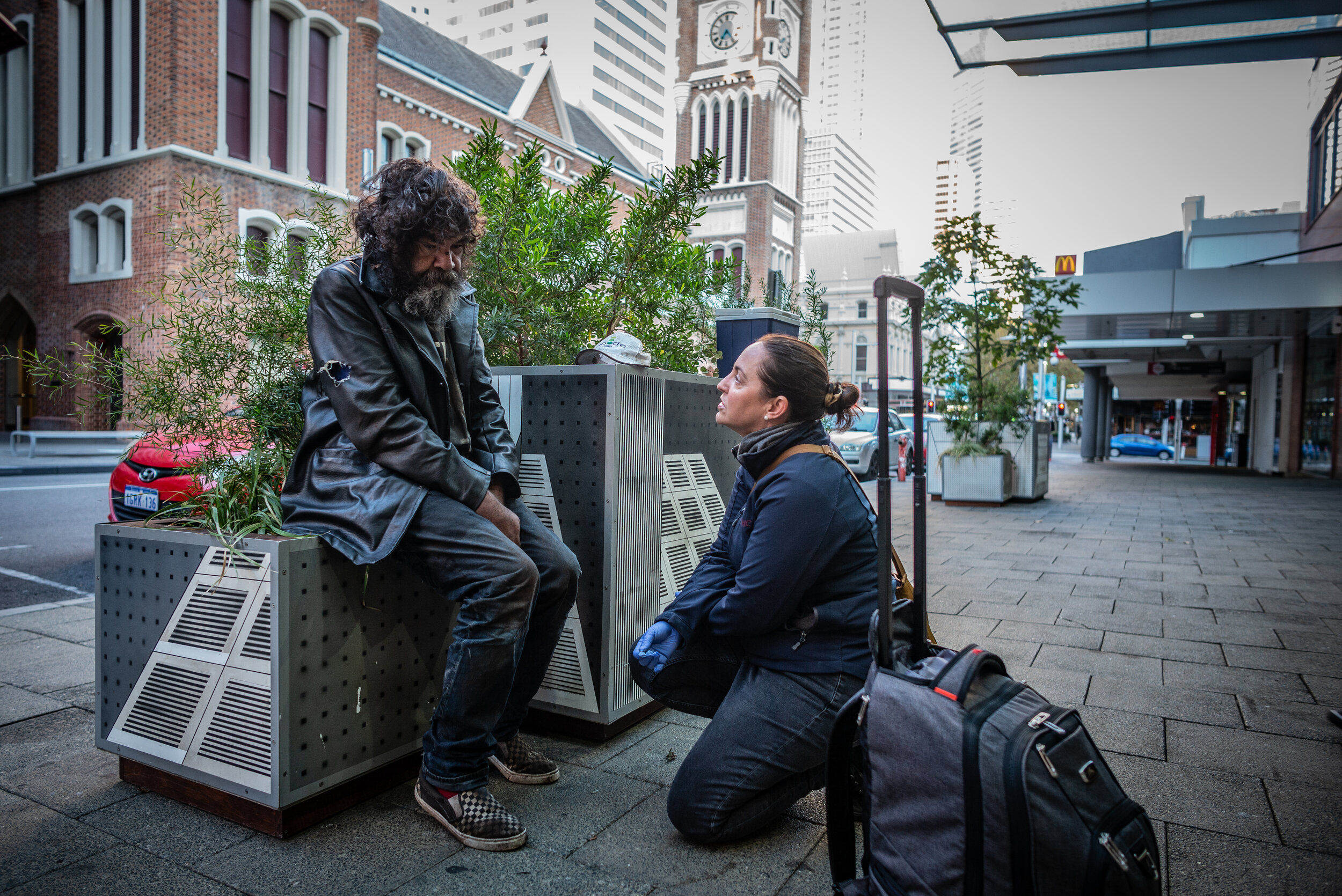
Homelessness
What is homelessness?
Being homeless is more than sleeping rough: a homeless person does not have secure tenure over permanent housing. Homelessness includes people who are sleeping rough, couch surfing, staying in temporary accommodation, have no fixed address and those housed in long-term hostels and shelters. At the core of homelessness is a disconnection from the society in which we live.
It is extremely rare for a person to end up homeless by choice. Instead, it is usually a result of a complex combination of unplanned and often tragic circumstances. At the last census, there were over 9,900 homeless people across Western Australia (ABS 2021).
While rough sleepers (also referred to as primary homelessness) is the most visible form of homelessness, it only accounted for 23.8% of those who reported being homeless in WA on census night.
Western Australia, however, had a higher proportion of people experiencing primary homelessness (23.8%) than the rest of Australia (7.6%), (ABS, 2021).

It is extremely rare for a person to end up homeless by choice. Instead, it is usually a result of a complex combination of unplanned and often tragic circumstances.
Health and homelessness.
Many factors, including economic, political and environmental, can lead to homelessness. However, health problems are one of the biggest precipitants in becoming homeless and one of the biggest perpetuating factors for remaining homeless.
A growing body of evidence has demonstrated that experiencing homelessness not only causes illness but can exacerbate pre-existing health issues to critical levels. These health issues are typically only addressed in a partial or fragmented way; especially for those people who experience frequent or lengthy episodes of homelessness.
The health of homeless people is extremely poor; research from Europe and America indicates that homeless people have a life expectancy of between 43 and 48 years, which is almost half of the 80 years an average Australian will live.
Homeless people are six times more likely to die from suicide, 2.5 times more likely to die from natural causes, and 15 times more likely to die from intentional harm than the general population.
The most common health problems seen among homeless people are mental disorders, alcohol and drug use, injuries, skin infections and infestations, poor foot and mouth care, poor compliance with medications, and blood-borne viruses (hepatitis B, hepatitis C and HIV).
For a homeless person, health and housing are intrinsically linked. The best thing for the health of a homeless person is to find them permanent stable housing. Unfortunately, for people who have experienced homelessness, their poor health makes it difficult for them to maintain housing.
“One of the best examples of integrated homeless healthcare I have seen anywhere in the world is the Homelessness Healthcare practice led by Dr Andrew Davies. This service has evolved since 2008 and continues to expand to meet the service needs of Perth’s homeless population. The Perth model is an exemplar for homeless health services in Australia and also overseas. This integration of services clearly puts people experiencing homelessness at the center of care, and provides continuity of care for a group who often fall through the cracks of the health system.”
— Dr Adrian Gillin, Royal Prince Alfred Hospital, Sydney

